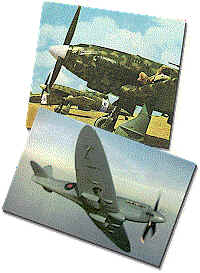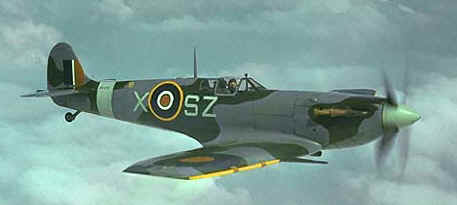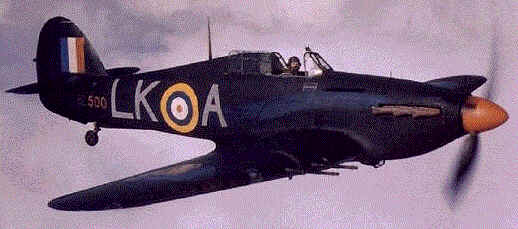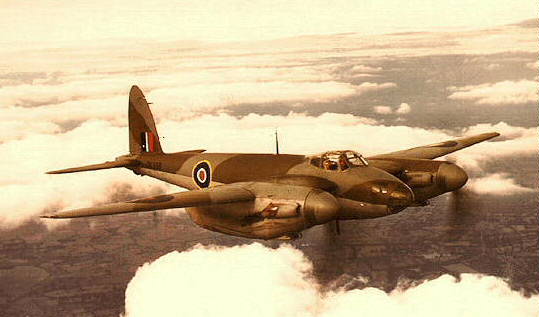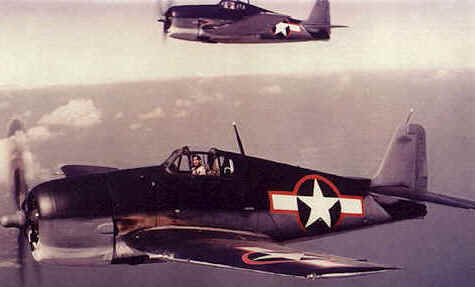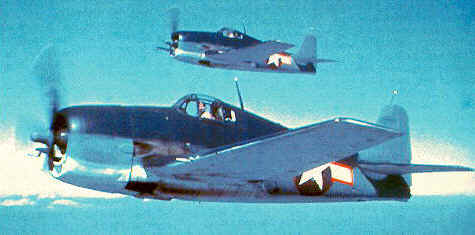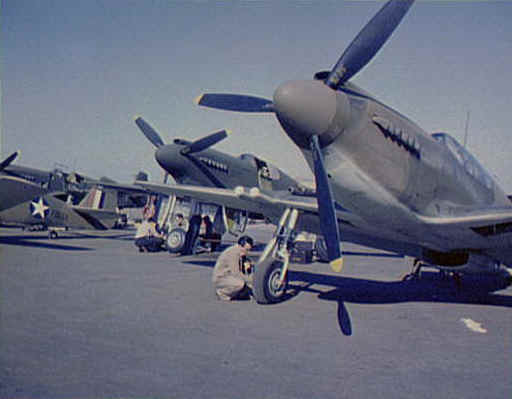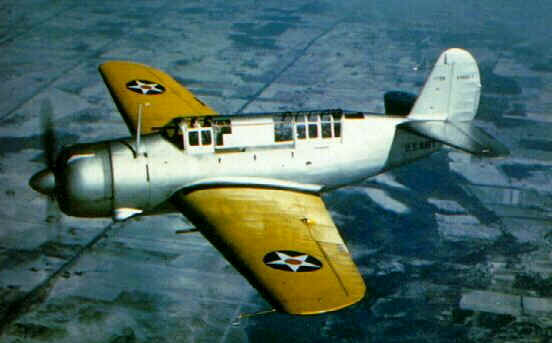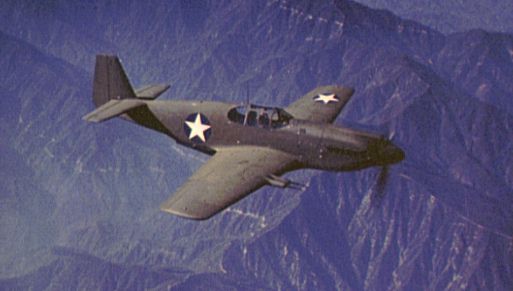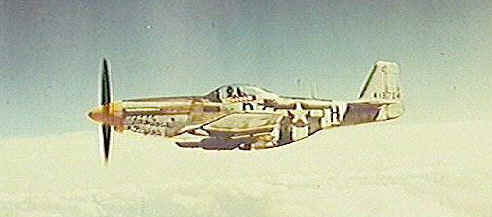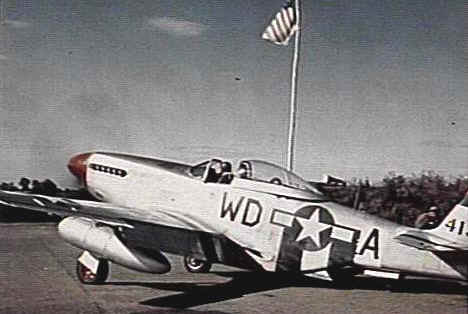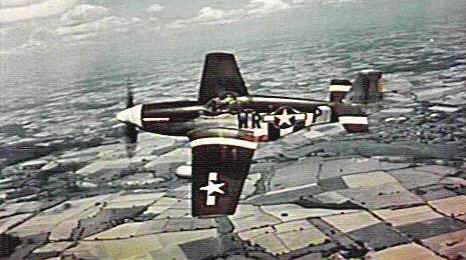Managed by Martin Waligorski
If a picture says more than a thousand words…
…then certainly a color picture must be worth at least ten times more! This conclusion must have been made by many modellers and enthusiasts interested in World War 2 and pre-war period. The inherent problem of the research material is that most photographic evidence we have is black-and-white. This has lead to very much confusion, simplifications and erroneous conclusions in the past, as it is simply not possible to ”read” colors with accuracy from a black-and-white photo.
What most researchers did and still do, is to analyze b-&-w material and then make some sort of qualified guess about what the actual color probably was, applying the general knowledge about the era, paint regulations, common camouflage schemes and so on.
A useful source of information is a handful of true color photographs the are left from the period. These give us much better information about the color of the subject. And, sadly enough, often prove how wrong we could be with our assumptions about color on b-&-w pictures!
World War II color picture gallery
- A Story about LOU IV
- A complete introduction to the subject of vintage color photographs!
- Seeing is Believing: LOU IV Addendum
- One more look at the LOU IV and some comments about military camouflage in general.
- World War II British aircraft gallery, see below
- Spitfire, Hurricane, Mosquito, Wellington and others
- World War II American aircraft gallery, see below
- Mustang, Helldiver and others. Still small but growing! Check also ”new pictures”.
- World War II German aircraft gallery
- Bf 109, Me 262, Ju 87, and more
- World War II other Axis aircraft gallery
- Italian, Japanese, Romanian aircraft
World War II British Aircraft in Color
A Spitfire Mk V, the photograph is believed to be taken by Charles Brown. Several similar shots of this aircraft have been published. The Machine is an LF Mk. VB with clipped wings.
Clipped-wing Spitfire Mk VB in flightThere is a story behind the picture. The machine shown, SZ*X belonged to the no. 316 (Polish) Fighter Squadron, a unit consisting entirely of exile Polish personnel. In March 1943 the squadron received the new Spitfires Mk. IX. However, after the reorganisation of the RAF in August 1943 that year the unit was assigned to the newly-formed Air Defence of Great Britain. In this role it converted back to the LF Mk. VB for low-level defence and convoy escort duties. The sqadron was relocated to to Acklington, Northumberland, and then Woodvale in Lancs.
The pilots weren’t enthusiastic about these old aircraft. The received Mk. Vs were long-used airframes somewhat uprated by the maintenance units. The performance wasn’t a match for the Mk IX.
Having more time than usual in this second-line assignment, the squadron’s mechanics tested several ideas. Some of the unit’s aircraft were laboriously polished by hand to a very smooth finish to gain speed. Indeed, the increase was deemed worth the trouble and the practice was sporadically adopted also by other Mk V units. SZ*X was on of the aircraft on which the idea was tested.
The ”polished” Spitfires served with the squadron only until April 1944, when the new Mustang Mk. IIIs were received, and the unit moved back to southern England. No. 316 used it’s Mustangs effectively against V1 flying bombs.
Knowing this background information, let’s have a look at the photo. The smooth quality of the finish is apparent. Even the camouflage edges appear to be extra sharp on the aircraft – as all modellers will know, polishing helps to remove overspray! Otherwise the scheme is entirely conventional with Dark Green/Ocean Grey upper and Medium Sea Grey lower surfaces. The spinner and the tail band are painted Sky, propeller blades black, wing leading edges yellow interrupted by red patches over the gun ports. A conventional mid-war RAF day fighter scheme!
Still, there are some points of interest in the markings. The size and style of letters SZ*X is non-standard. Letters are painted in Sky. The serial number which is known to be BL 479 is painted only in small letters on top of the tail band.
There is a visible square patch just behind the letter X on the fuselage, a supposed result of a field repair, and painted only in primer.
The movable portion of a canopy frame is painted in what appears to be grey color, lighter than Ocean Grey. Perhaps even this part was replaced during the unit service.
Bob Sikkel added:
Hi, I have a couple of comments about this shot. The square patch above the ’X’ on the fuselage covers the identification flare port, probably doped fabric as was done on the gunports.
This well-known photograph shows a Hawker Hurricane Mk IIc, serial no. BE500 of No. 87 Squadron, in early british night fighter camouflage of matt black overall.
Olav Hungnes contributed with more comments:
This Hurricane picture appears in the book The Royal Air Force of World War Two in Colour, and the caption for this has the following info:
Personal a/c of 87 Sqn leader Dennis Smallwood. BE500 had the name Cawnpore I, being a presentation aircraft funded by donation from this location in the United Provinces.
The photo is taken during a flight from Charmy Down on 7 May 1942.
Points of interest:
– Overwing ”B” roundel is so smooth that it mirrors the fuselage roundel.
– Bluish tinge to exhaust stain.
– Yellow leading edge marking shows through the black paint (at least visible in my book).
– Spinner and serial lettering in same red as roundel/fin flash.
– Original colour on the part of spine masked by closed canopy (and also on canopy frames?).
– Chord-wise non-black band between the cannons?
– Squadron Leader pennant below windscreen.
A classical study of Vickers Wellington in beautiful color.
Olav Hungnes described this picture as:
I have another in-flight colour pic of Z1572 VR-Q, in the book The Royal Air Force of World War Two in Colour.
This other photo is from the starboard side, and gives both a date and a place. It would be remarkable if the above photo wasn’t taken during the same session.
The caption reads:
Wellington III Z1572, seen flying ENE (that would be east-northeast) some three miles east of Thetford (the road is that from Brettenham to Bridgham) on 27 May 1942 when serving with No 419 Squadron. This unit was the third Canadian-crewed bomber squadron to be formed in the UK. Z1572 served first with Nos 115 and 75 Squadrons and went on to fly for another RCAF squadron, No 427, before being pensioned off for training duties with No 16 OTU. The bomber was finally SOC (struck off charge) on 30 April 1945.
Point of interest are: 1. Tannish leading edges of flying surfaces (and also D/F loop housing). 2. Remarkably bright blue in fuselage roundel and fin flash, different from upper wing roundel.
Mosquito B Mk.IV DK338 was photographed during manufacturers’ trials at Hatfield in September 1942 before it was given No. 105 Squadron markings. This particular aircraft eventually crash landed on the approach to Marham on 1st May 1943.
The camouflage is a standard earlier Mosquito scheme of Dark Green and Ocean Grey upper surfaces with Medium Sea Grey undersides, but the photograph does not reflect the colors properly because of it’s brownish tint. The spinners are painted Ocean Grey.
Note the massive coal-black stain developing behind on the engine nacelle behind the exhaust shroud and oil dripping everywhere!
Another Mosquito, this time a B Mk.XVI ML963 from no. 571 squadron. Same camouflage scheme as on B Mk IV above, although this time the colors are captured better on the film. The machine is war-weary, serving before the picture was taken with both no. 109 and no. 692 squadrons. Finally it would be lost in a mission over Berlin on 10th April 1945.
On the upper surface of the wing you can see lot of wear and tear on the paint. A large rectangular patch in grey color has been added just over the back of the port engine nacelle. Another patch can be seen just in front of the serial number – a gray belt of primer color, probably a result of some major repair to the tail. Standard RAF roundels of late war variety are carried and the code letters RK-K are painted in insignia red. Furthermore, there are five mission marking rectangles painted in white at the front fuselage just behind bombardiers’ side window. There is also a non-standard feature to this otherwise very standardly camouflaged aircraft. The leading edges of the radiators between the engine nacelles and the fuselage are painted in black color.
Note that the exhaust stain is much softer than on the previous picture because of non-shrouded exhausts.
Classic beauty! This well-known photo presents a Spitfire PR Mk XIX – a late photo-reconnaissance mark with Rolls-Royce Griffon engine. It is probably a factory-fresh machine photographed during a trial flight. What makes the photo interesting is the PRU Blue camouflage – a unique shade of blue used by RAF reconnaissance aircraft to conceal them against sky background at altitude.
The roundels are of low-visibility type with no white ring. The propeller blades are black with yellow tips. Other interesting feature is very noticeable stenciling on the port wing, reading LOCATION FOR WING STEADYING TRESTLE. These stencils were typical for all Spitfire marks.
For a modeller, there are further interesting things to note. The inside of the radiators and details like pitot tube are all painted in the same color as the rest of the aircraft. The exhaust pipes are not stained in rusty-black as many modellers would be tempted to render them, but rather in pale color, and the discoloration is very uneven. Furthermore, note a massive oil leak developing under the wing center and further back the fuselage – typical for even brand-new Spitfires of all marks!
World War II American Aircraft in Color
Both pictures show a pair of Grumman F6F Hellcats with red-outlined star-and-bar insignia and lacking any visible unit markings. The aircraft appear to be in new condition – perhaps the photographs have been taking during manufaturer’s trials.
The high-octane fuel used by the US Navy caused the excessive burn damage and stains to the paint, as can be clearly seen behind the exhaust stacks of the nearest aircraft.
Don McIntyre wrote:
I think I’ve seen this photo before. In fact I do have a copy from Grumman which seems to show the same two aircraft, flying at another time possibly during the same photo session (the horizon and cloud cover in my photo area little different). I believe they are F6F-3s on a Grumman
test flight. They are in the standard USN Tricolor Scheme, Non-Specular Sea Blue (ANA 607), Non-Specular Intermediate Blue (ANA 608) and the lower surfaces would be Non-Specular Insignia White (ANA 601). The Red surrounds to the national insignia should indicate a summer of 1943 time frame (June – September 1943). Prior to that the US forces just used the Star-in-Circle insignia. After September 1943 the red surrounds were replaced with Insignia Blue. Of course the insignia could have been (and was) used after that date in the field, but if these are factory-fresh aircraft I don’t really see this as a factor.
Martin Waligorski
Following Don’s advice, I decided that both photos that I originally retrieved were reversed, the F6F-3 pitot tube was located under the right wing. I flipped the pictures, but as you can see, there´s no other way of telling which orientation is right!
 These two photographs depict a number of early P-51A Mustang Mk Is outside of North American factory at Inglewood. The aircraft wear a factory-fresh finish. They were apparently produced for RAF and wear a standard British camouflage. The colors used are American counterparts for British Dark Green, Dark Earth and Sky.
These two photographs depict a number of early P-51A Mustang Mk Is outside of North American factory at Inglewood. The aircraft wear a factory-fresh finish. They were apparently produced for RAF and wear a standard British camouflage. The colors used are American counterparts for British Dark Green, Dark Earth and Sky.
Of interest is that the exhaust stain is already clearly noticeable on the nearest aircraft. Propeller blades are black with yellow tips. It is also clearly visible that the nearest Mustang has it’s spinner painted in US Olive Drab (which would be hard to see on a black-and-white photograph), but the one on the machine further further back seems to be painted in a darker color.
The aircraft at the far left has an interesting set of markings, combining an American star on the fuselage with RAF fin flash. This indicates that the aircraft presented on the picture are being diverted to USAAF from planned RAF delivery, and allows us to date this photograph to 1942. October 1942 as stated by the original caption of the lower photo. Bingo!
This photo shows a prototype Curtiss XSB2C Helldiver. The aircraft differs in many areas from the later production examples of this dive bomber – the cowling, canopy and fin shape are all different.
The aircraft carries a colorful US Navy peacetime finish, which indicates that the photo had been taken before the USA joined the war, probably some time during 1940. The wings of the aircraft are painted Glossy Orange Yellow (FS 13538), the fuselage is probably painted in silver dope rather than left natural metal, as the sheen of the finish is really too matt for the bare metal. This is futrher confirmed by the fabric-covered rudder, as this was most certainly painted in silver, and there doesnt’ seem to by any tonal difference in color between the rudder and the fin.
The horizonatal tail surfaces are painted in glossy black. The spinner also appears to be in dark color, maybe the same black, look and judge for yourself! Undoubtedly black is also a wing-walk area at the wing root. These black wing-walks and yelow-painted wings were typical for many pre-war Navy aircraft.
The blak inscription US NAVY appears at the rear of the fuselage. There is also a small stencil on the top part of the fin/rudder, which might be a serial number of the aircraft.
The national markings are typical for the pre-war period US aircraft, consisting of a white star in blue circle with an additional red dot in the middle.
Robert Karr commented:
According to the book WW II War Eagles – Global Air War in Original Color by Jeff Ethell and Warren Bodie, this photo shows the first flight of the first XSB2C-1 Helldiver on December 18, 1940 over the country side around Buffalo, New York.
Tom Gourlie added:
According to ’Carrier Air War in Original WWII Color by Robert Lawson and Barrett Tillman, the BuNo of the Helldiver Prototype was 1758. However, Bert Kinsey in his Detail & Scale Vol.52 says it is 1748.
Paul Fontenoy:
In this instance Bert Kinzey is wrong and Barrett Tillman correct–the BuNo of the XSB2C-1 was 1758. BuNo 1748 was a Douglas SBD-1.
This cannon-armed early Mustang is seen here in October 1942 on the factory trial flight near Inglewood, California. The photographer was Alfred T. Palmer.
Curiously, the original caption says: ”P-51 Mustang fighter in flight, Inglewood, Calif. The ”Mustang”, built by North American Aviation, Incorporated, is the only American-built fighter used by the Royal Air Force of Great Britain.”
Is this an RAF Mustang? Doubtful. Can somebody help to identify the exact subtype and it’s destination? And how about the camouflage color – is it Olive Drab?
Bruce Archer (Southern New Jersey Scale Modelers) replied:
The aircraft is a P-51A, not a RAF Mustang. And yes the colour scheme is the typical Olive Drab over Neutral Grey scheme. However the specified Medium Green splotches do not seem to have been applied to the fin, tail and wings.
All I could determine is that this is an SBD Dauntless. In Army colors? Help!
Frank Goodridge answered:
Yes, it’s a Douglas Dauntless, but it’s an A-24 variant built for the Army. Essentially the same as the Navy SBD, but lacking the arrestor gear for deck landing and some other differences in fittings. They were still around as late as 1948 when they were redesignated F-24’s, and two were re-manufactured as a QF-24A, and a DF-24B in the same year.
Martin Waligorski wondered:
Apparently this aircraft had been extensively used, as indicated by worn-off paint on the cowling and antenna mast. An interesting detail which I’m not sure what to think about is an area of medium grey color on the fin and rudder. Also, what is the shade of the upper green color? Looks rather dark for being Olive Drab.
Jeff Garbutt added:
This looks like a ”Banshee” I think this was the USAAC’s version of the Dauntless. If I recall correctly the Army had two squadrons of these based in New Zealand at the opening stages of the U.S. war with Japan, but they didn’t last very long as their performance was unsatisfactory. It looks as if the tail hook arrestor housing located toward the rear of this airplane is intact.
”Sven” Svendsen responded:
I’m going to disagree and say that this is an SBD-3. Every photo and drawing I’ve seen of an A-24 Banshee shows a very conspicuous USAAF serial number in yellow across the vertical tail surfaces – none here. My data also indicates that every A-24 had the larger pneumatic tail wheel, replacing the smaller, solid rubber tail wheel common to most of the SBDs (the SBD-5A had the pneumatic tire, too). This photo shows the smaller tail wheel and the associated larger tail strut fairing. The national insignia is the oversize version common to USN and USMC SBDs in 1942 and early 1943. The A-24s carried a smaller insignia until the version with the bars was introduced.
And finally, the individual aircraft code is the type used by USN VS units. Unfortunately, the squadron number is masked by the wing tip, but the format of X-S-12 is unmistakable – denoting the 12th aircraft in scouting squadron ”X”. As for the missing tail hook, it was common for land-based USMC units to remove the tailhook and in this case the Navy may have done the same while operating from bases like Guadalcanal, for instance. The color is still open to conjecture, but I would bet the gray of the aft fuselage and tail is the true color and the green is either a photographic anomaly or the result of severe wear associated with operations from unprepared coral and sand airstrips.
Lynn Ritger added:
It’s not an A-24…nor is it Army! The aircraft on the picture is, indeed, a Navy Dauntless, albeit a rather worn out one! It’s one of the original batch of 50 or so SBD-1 variants which were originally pushed off to the Marine Corps. Identifiers as a Navy aircraft are the smaller, hard tailwheel (A-24s had larger pneumatic tires for better ground handling) and the coding…all Army A-24s (that I’ve seen) carried their serials prominently on the vertical stab and rudder, and this bird has a *-S-12 marking, indicating a Scouting squadron. As I recall, this picture was taken while the aircraft was assigned to a Stateside training school…notice the yellow 500lb dummy bomb and no tailhook! As far as a possible scheme, I’d have to say there’s been some kind of color shift in this reproduction- a typical scheme would be a Non-Specular Sea Blue on the topsides. It could also be a well worn coat of said paint, I’ve seen that color shift in some awfully odd directions.
Martin Waligorski:
I’l agree with Sven and Lynn, but the camo color is still puzzling. I think it is green. Any blue shade would rather be rendered properly on the photo, as can be seen by the color of the sky and national insignia. Also, the grey patch on the fin appears quite neutral in shade, indicating that there are no general color shift problems with the photo. Could the Non-Specular Sea Blue weather off into dark green?
I must also admit that I’m not an expert on US Navy aircraft. This is an F4U-1 with later, bulged canopy, but I didn’t know they could carry bombs… and, any comments about the camouflage scheme? Also, what is the time and place?
Bruce Archer (Southern New Jersey Scale Modelers) replied:
The aircraft shown is a F4U-1A, recognisable by the frames on the canopy. These were able to carry bombs (note the Brewster Bomb Rack underneath) and drop tanks. The colour scheme is the Tri-colour scheme of Non-Specular Sea Blue, Intermediate Blue, and Non-Specular White undersides.
Martin Waligorski:
Is this camouflage really tri-colour? I can only recognise a single topside color on the photo. Also, an interesting thing is that the star-and-bar outline on the fuselage is darker in shade than Insignia Blue of the star roundel. Any explanation for this?
Bruce Archer:
Yes there is a reason (for the darker insignia outline – Ed.). The bars were added with fresh paint to faded cocordes. At first these would have been red bars then re-painted Insignia Blue. Hence what appears to be two colours. If you look at photos of 9th AF Marauders this is fairly common. And yes, the tri-colour is there, though faint.
An early Republic Thunderbolt, probably a P-47C, somewhere in England. Tell us more! When and where was the picture taken? Who is the pilot? Anything interesting about the paint scheme? Why is the cowling white? Any comments about the B-17 in the background?
Notes by Jeff Harrison:
This plane is painted in the standard camouflage and markings for P-47’s in early 1943. P-47’s of the 4th, 56th and 78th fighter groups all sported a yellow surround to the fuselage national insignia by the spring of 1943 so it’s pretty safe to say that this photograph was taken before then. The camouflage is Olive Drab over Neutral Gray (possibly the US equivalent of Medium Sea Grey after it was decided to simplify the various schemes and start using one color instead of 3 or 4 different yet similar colors for the various camouflage schemes in effect). The white cowl (and if you look closely the white band on the horizontal stabilizer and the white band just visible on the vertical stabilizer) are standard recognition markings applied to P-47’s shortly after their introduction to the ETO.
Little can be seen of the B-17 in the background. It is probably an F (the standard model in service at the time this picture was probably taken) and is camouflaged in the standard Olive Drab over Neutral Gray scheme with Medium Green blotches to break up the outline of the fin, wings and stabilizers. The serial number is yellow and aside from that there is little else to be told from this picture.
Steve Collins added:
Also note that the cowling underside gray and the gray under the fuselage do not line up. Apparently, the cowling was removed from the aircraft to be painted, and the same one was not put back on. Additionally, the thin white strip behind the white on the cowling is probably due to overspray past the masking tape put down.
Additions by Chuck Rau:
Type 1 National Insignia (Cocarde) was a blue circle with a white star in the middle of it, then a smaller red circle within the star. This went into effect 01-Jan-1921.
Type 2 Cocarde was issued 15-May-1942 which ordered the red circle removed to avoid confusion with the Japanese meatball.
Type 2a (as I call it) was issued on 01-Oct-1942 when a yellow surround was added to the outside of the blue circle. On British aircraft used by the Americans, the yellow outside ring of RAF insignia was left during overpainting.
The photo shows the P-47’s insignia to be of Type 2. It does not appear that squadron markings are present yet, the horizontal stabilizer appears to show a white stripe, as does the space between the pitot tube and the vertical stabilizer, which would go along with the cowling paint job as the early 8th AF fighter theater markings. The first P-47D (serial number 42-22250) rolled off the assembly line from the new Evansville, Indiana plant September of 1942, and it did not replace the -C model on the line at Farmingdale until February 1943, so this fighter must be a P-47C.
The B-17 is definitely not a -G model. You would see part of the chin turret from this angle. Look close at the top turret. It shows that it is the older Bendix electrically-powered turret. This was used on all -Es and early -Fs. The first B-17F (41-24340) flew on May 30, 1942. Studying the photo the last three digits look like 459. The first B-17 with those last three digits would be a Boeing B-17F-10-BO Fortress (41-24440/24489). I am not sure if this plane would have made England before at least September. The B-17E was first flown to England around July 1942 for the 8th AF buildup. The serial numbers for the -Es are: 41-2393/2669. The 459 would fit in this group also. Most likely the B-17 is an E model.
With these details, that would put the photo sometime around July of 1942 and in England.
Another thought is that because a fighter and bomber are together could mean they could be at a depot in England, where the P-47 just got his theater markings and is heading out to his squadron, and the B-17 could be an -F model having received its camouflage of medium green added to the Olive Drab. That might put this photo around September of 1942.
An action-packed scene from a flight deck, an F6F Hellcat has it’s wings folded out prior to take-off. Extra fuel tank is barely visible under the fuselage for a long-range mission.
I could not determine the ship, the unit or the time frame when the photo was taken. Perhaps somebody will help? Also, which F6F version is this one?
Loukas Papadimitriou wrote:
Without been an F6F expert and checking my references, it looks like an F6F -3 in standard US navy scheme ANA 601, 606, 607. According to the scenery it looks like Pacific around 1943. Also following the deck’s action, the carrier is preparing to launch a patrol. The a/c’s starboard wing is fairly faded but there are no evident gun stains on it.
Notes by Paul Fontenoy:
This is F6F-3 BuNo 41090 of VF-1 from Air Group 1 serving aboard USS Yorktown (CV-10) in June-July 1944. The diagonal stripe on the tail and the green propellor hub identify the ship as Yorktown. I have another photo of this plane (b&w though), taken in June, which clearly identifies it as 41090. During this period Yorktown took part in the capture of Saipan, 1st Bonin raid, Battle of the Philippine Sea, 2nd & 3rd Bonin raids, capture of Guam, and raids on Palau, Yap, and Ulithi.
Norm Filer added:
According to ”Chronology of Camouflage and Markings for U. S. Navel Combat Aircraft World War II” (Whew!!) your Hellcat is off USS Yorktown (CV-10) in June/July, 1944. Was assigned to VF-1.
Everything appears to match right down to the Pea Green spinner. Only thing not present is the small tophat insignia under the right side of the windscreen. This could be there but just not visible.
Please help to identify the unit which this P-51D belonged, and perhaps the pilot. Also, when was the picture taken?
Jeff Harrison commented:
This looks to be a fairly early P-51D since it lacks the fillet that was added to the fin. The yellow nose marks it as a member of the 361st fighter group making the fuselage codes B7 * H. A squadron code of B7 means this is a member of the 374th fighter squadron. There has been camouflage applied to
the upper surfaces covering the invasion stripes (see discussion of Lou IV). This photograph was probably taken in late July or August of 1944 because in the July/August time frame the yellow nose marking was extended back to the windscreen and in November squadron colors were added to the rudder (Red for the 374th FS).
Steve Collins responded:
This aircraft was nicknamed ”Ferocious Frankie” (the name painted below the exhausts) and flown by Wallace Hopkins, an ace with 6 kills to his credit.
Martin Waligorski:
Only five kill markings are visible on the lower canopy frame, so there was one more to go at the time this photo was taken…
Susanna Viljanen:
Although often presented as a fighter ace, Major Wallace Hopkins (the pilot of ”Ferocious Frankie”) wasn’t. He had a total of four aerial and two ground kills.
Please help to identify the unit which this P-51D belonged, and perhaps the serial number. Also, where and when was this photo taken?
Jeff Harrison:
This is a P-51D of the 4th Fighter Group, 335th Fighter Squadron. The lack of upper invasion stripes dates this photograph after July, 1944 but probably before December when the nose band was extended to 24″ (nose color was swept back and down in January, 1945).
Lynn Ritger wrote:
This is the first P-51D-5-NA assigned to Maj. Pierce McKennon, serial number 44-13883. This photo was taken shortly after the 4th Fighter Group received their first D models…Maj. McKennon would go on to greater fame with later D models named ”Ridge Runner” (there were several; for an excellent account of the Fourth FG, visit the website at www.fourthfightergroup.com).
A North American P-51B in low-level flight over England. This aircraft was equipped with Malcolm style canopy. Also, where and when was this photo taken? Which unit? Who flew the aircraft?
Norm Filer responded:
Due to the high contrast is difficult (read impossible) to see the name under the exhaust, but that is ”The Iowa Beaut” of the 354th FS/355th FG. Pilot was Lt. Lee Mendenhall.
Again, due to high contrast is difficult to see the ten kills under the canopy. Also is just possible to see the darker Olive Drab on the top of the wings and fuselage where the invasion stripes have been painted over. When the first of the unpainted Mustangs started arriving in England, some of the fighter wings felt they were too visible, especially when mixed in with Olive Drab/Gray birds. As a result some had the upper surfaces overpainted. This is a good example of that. Photo credit: Totavia Adrian Cybriwsky aviation image archives
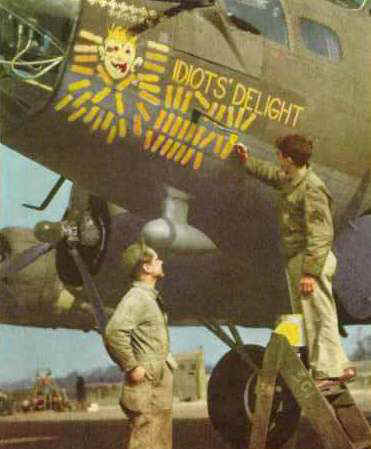 Idiot’s Delight, a Boeing B-17F somewhere in England, has it’s 50th mission mark painted on with an (extra-large) bomb symbol.
Idiot’s Delight, a Boeing B-17F somewhere in England, has it’s 50th mission mark painted on with an (extra-large) bomb symbol.
Anybody knows more about this particular ship, or the unit it belonged to?
Jeff Harrison wrote:
Idiots’ Delight (42-30301 XM * J) belonged to the 94th Bomb Group, 332nd Bomb Squadron and was the first in that group to survive 50 missions. She flew her first mission on July 14, 1943 to Le Bourget and her fiftieth mission on March 22, 1944 to Berlin. Camouflage is standard Olive Drab over Neutral Gray with Neutral Gray (instead of white) stars in the national insignia.
J Ponder wrote:
I have a picture of my brother taken with the others in his crew, standing beside this plane. He was left waist gunner on another plane when it was shot down over Hungary. He and another man died. They all bailed out except my brother. I learned yesterday after finding and talking to the pilot of the B-17 that they were on. Ralph was the last one left on the plane and went down with it. Eight of the men were taken prisoner of war. The date was July 2, 1944. The pilot survives today and also my godfather who was also on this plane. Is anyone familiar with any of the above information?
Another Fortress, this time a well-worn B-17G named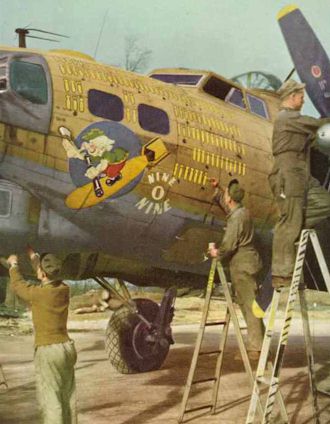 ”Nine-O-Nine” after three last digits of it’s serial number. More than hone hundred mission marks are present.
”Nine-O-Nine” after three last digits of it’s serial number. More than hone hundred mission marks are present.
The picture is believed to be taken during the ending war period.
Anybody knows more about this particular ship, or the unit it belonged to? Also, any comments about the camouflage colors seen here?
Jeff Harrison wrote:
Nine O Nine is a B-17G-30-BO of the 333rd Bomb Squadron, 91st Bomb Group. The plane is camouflaged in a very faded Olive Drab over Gray scheme. The codes on the fuselage were OR * R in yellow. Her serial number is 42-31909. Nine O Nine eventually completed 140 missions.
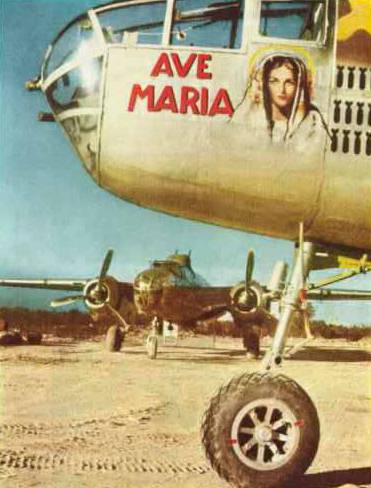 ”Ave Maria” was a B-25 Mitchell belonging to 12th Air Force in Italy which reportedly has flown over 100 missions at the time when the photo was taken. Which time, and which unit? – This could not be determined.
”Ave Maria” was a B-25 Mitchell belonging to 12th Air Force in Italy which reportedly has flown over 100 missions at the time when the photo was taken. Which time, and which unit? – This could not be determined.
Don Kaiser wrote:
I think but I am not sure- this plane, Ave Maria was a B25J Mitchell medium bomber from the 489th bombardment squadron and the 340th bombardment group, 57th bomb wing, 12th air force, US Army Air Corps. My father flew in the 489th and I think I saw a picture of that plane (B&W though) in his squadron book. Great shot! Best regards, Don Kaiser
This article was originally published in IPMS Stockholm Magazine in May 1998.

